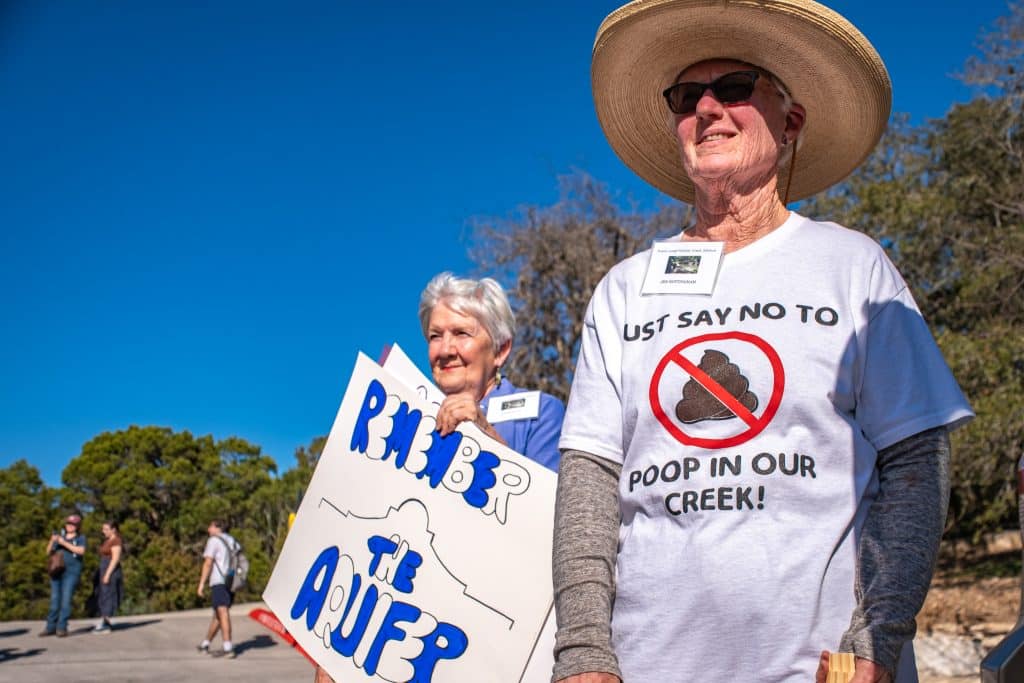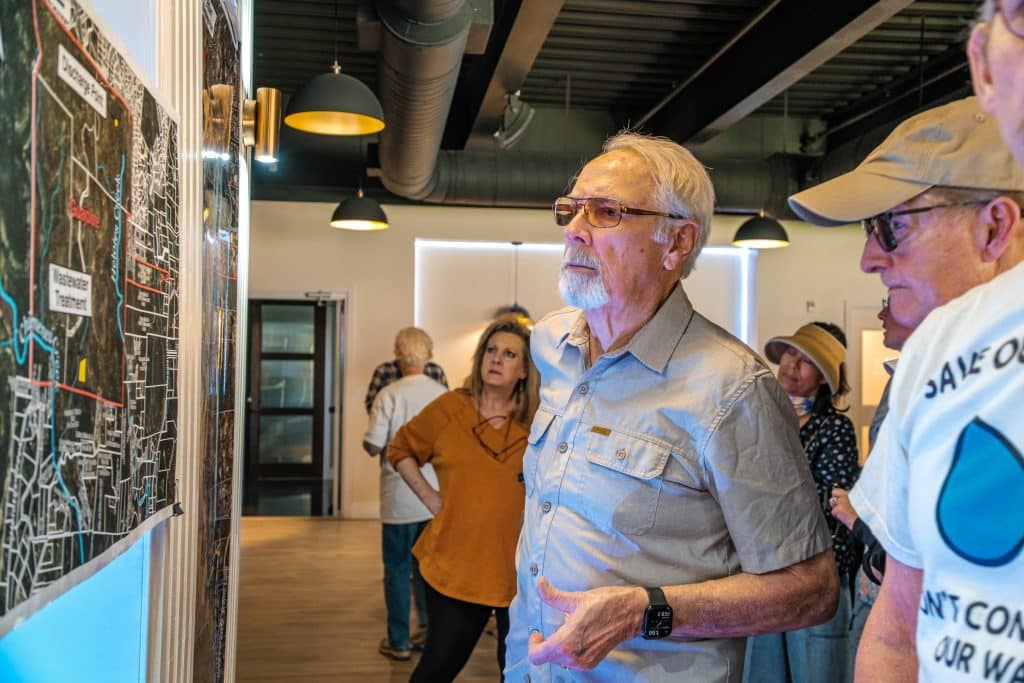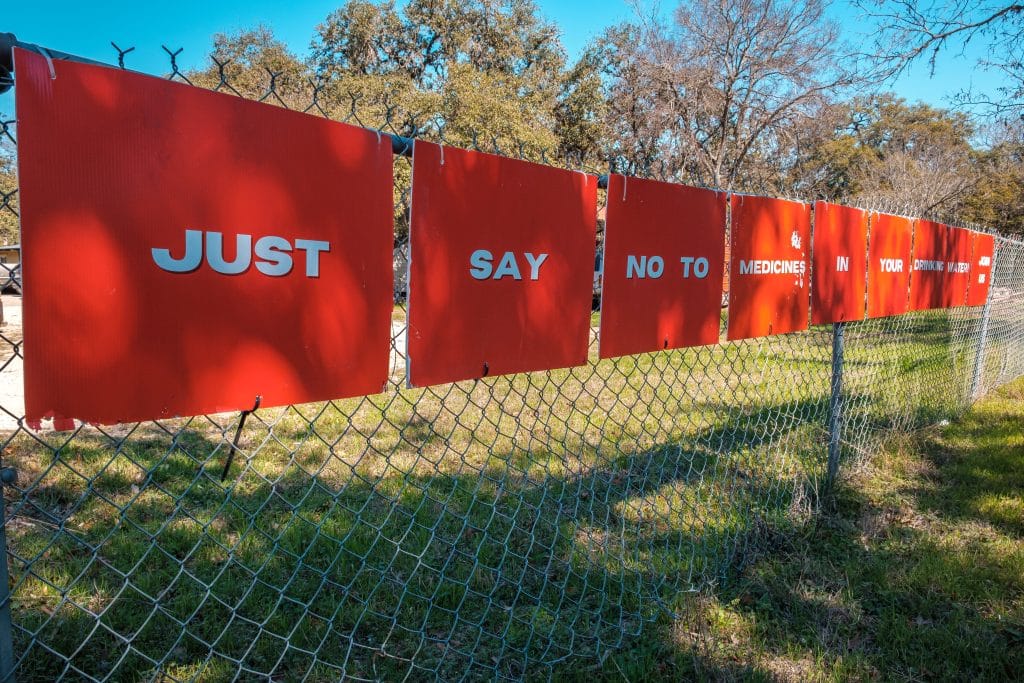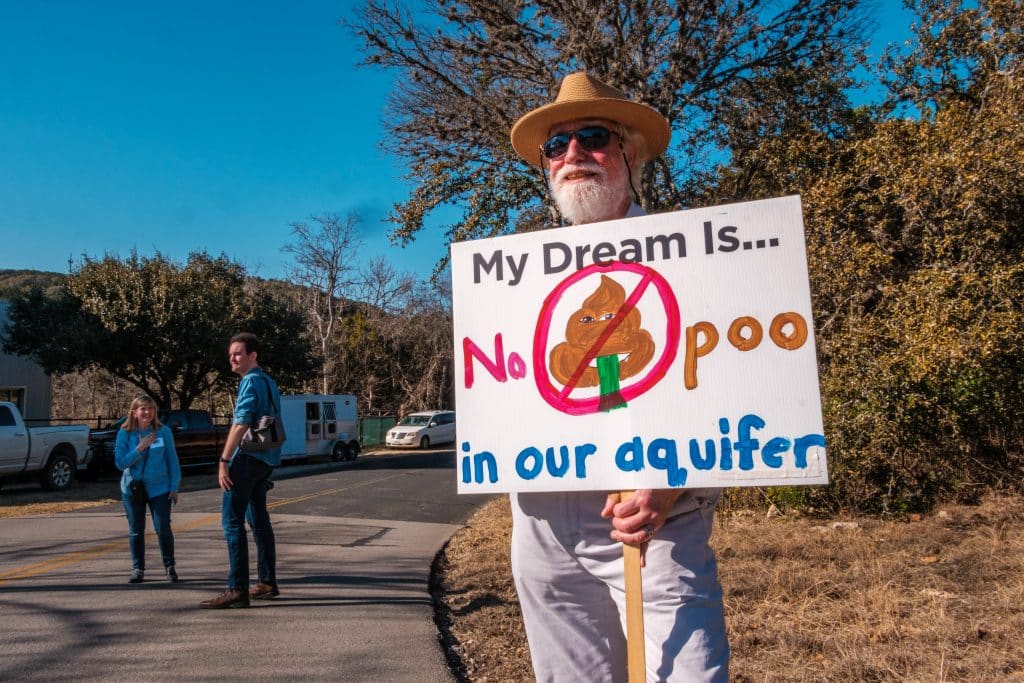
TCEQ Commissioners unanimously approved a controversial permit on Wednesday, October 22, 2025, to allow the discharge up to a million gallons of treated wastewater into the headwaters of Helotes Creek from the planned Guajolote Ranch subdivision.
While an appeal and possible lawsuit are already in motion, the ruling came as a blow to a broad coalition of interests that have resisted the project for fear of spoiling the quality of life for residents of the greater Grey Forest area, but also the threat they allege the discharges represent for regional drinking water.
A representative of the would-be plant operators dismissed those concerns before the TCEQ Commissioners.
“For over three and a half years, this permit application has been poked, prodded, and scrutinized at practically every level. State, county, as you just heard, city, micro-city, and if you believe the TikTokers, even at the international level,” said Helen Gilbert, representing Municipal Operations, LLC, which would serve an anticipated 1,900 homes in Lennar Homes’ planned subdivision.
“But this permit meets and exceeds applicable rules and statutes. It is not a serious risk.”
For those doing the prodding, however, the project represents a threat both to the local quality of life and the drinking water of millions. Former San Antonio mayor Ron Nirenberg, for instance, told Deceleration earlier this year that as mayor he was considering purchasing the property away from Lennar Homes or even suing to stop the project.
Bexar County Judge Peter Sakai decried the ruling in a statement reading, in part:
“I oppose the state’s action and will work shoulder to shoulder with local residents to protect our aquifer and the health and safety of our families. Today was a setback, but this fight is not over.”
Texas state House Rep. Mark Dorazio, District 122, was first to speak at the TCEQ hearing. He used his time to remind everyone of the outsized role that the Helotes Creek plays in the health of the broader Edwards Aquifer, the primary source of drinking water for greater San Antonio. He called permitting the release “a serious risk to the well being of anyone who relies on the Edwards Aquifer or the Trinity Glen Rose Aquifer.”
“The Helotes Creek watershed represents 15 percent of the Edwards Aquifer Recharge Zone. And if you do the numbers, you have 600,000 acres [total]. Divide that by 15, that’s roughly about, what? Ninety thousands acres of the recharge there,” Rep. Dorazio said.
“If we’re not 100 percent certain that the treatment plant won’t threaten that wonder of the natural world, we must deny this permit. And unfortunately, we cannot be 100 percent certain that it will not threaten our water, even when this facility is working perfectly.”
The Office of the Public Interest Counsel (OPIC), an independent party to all TCEQ proceedings, offered limited push back to the proposal. Its officers maintained at the hearing their earlier position that there will be too much phosphorus released from the site, which will inevitably jeopardize local water quality and negatively impact wildlife.
“The record includes expert testimony showing that this phosphorus limit [for the proposed discharge] is at least seven times higher than the existing concentrations in Helotes Creek, potentially causing more than de minimis degradation and excess algae growth harmful to aquatic life,” said Pranjal Mehta, a TCEQ attorney speaking for OPIC. “This is especially concerning in Texas Hill Country streams, like Helotes Creek, where species have adapted to low-phosphorus environments.”
Mehta urged the permit be denied or returned to the TCEQ Executive Director “for further evaluation.”
Speaking for Municipal Operations, LLC, Gilbert complained that the project’s opponents “collectively ignore the fact that this site will beneficially reuse 100 percent of the highly treated wastewater. So the outrage that there will be a million gallons per day of raw sewage dumped into the Edwards Aquifer is simply patently false.”

Since water provider San Antonio Water System (SAWS) requires half of the 1,100-acre project remain undeveloped, Gilbert said: “That allows significant opportunity for storage and irrigation. This means that the site will not be discharging most of the time, furthering water conservation in a major way.”
Calling for a vote, Brooke T. Paup, TCEQ Chairperson appointed by Governor Greg Abbott earlier this year, echoed Gilbert’s position.
“The applicant intends to reuse 100 percent of the effluent, but a discharge permit is required for exigent circumstances,” Paup said. “I’ve reviewed the record and the administrative law judge’s analysis and recommendation to grant the permit.”
Attorneys for the contestants, Greater Edwards Aquifer Alliance (GEAA) and the City of Grey Forest, challenged the science and the process informing the Commisisoner’s ruling.



Studying maps of the development and protesting the potential contamination of area groundwater back in February 2025, including a sign outside Grey Forest City Hall reading: ‘Just Say No to Medicines In Your Drinking Water. Join Us.’ Images: Greg Harman
Attorney Lauren Ice said the models used by the developer “likely over-predicts” the amount of dissolved oxygen in the receiving water body—a failure that should inspire commissioners to deny the permit.
Attorney Eric Allmon focused on process, charging that the TCEQ review was not sufficient.
“Helotes Creek, because it is fishable, swimmable, should have been subject to a Tier 2 review to determine whether the degradation was necessary for important social or economic development. That was not applied. No Tier 2 review was performed on Helotes Creek,” he said.
“The Supreme Court made clear that a Tier 2 review requires a review of the whole water body and the interaction between various contaminants. No type of review such as that was performed for any water body here.”
Opponents have long charged that existing water-quality rules are not sufficient to protect Texas waterways. Gilbert complained about opponents wanting to treat the Edwards Aquifer “contributing zone like the recharge zone,” which she called unreasonable “certainly without notice and due process and a rulemaking.”
Such reforms are at the heart of many Deceleration has spoken to about the case.
Lynette Topperwein Munson lives a quarter of a mile from Helotes Creek at the boundary with the proposed development. Jane Sams lives even closer. Both told Deceleration they were not notified about the permit application and both were denied standing when they sought to officially oppose it.
“When they realize that they made an error, they didn’t do nothing to rectify their error,” Munson told Deceleration.
Members of the Scenic Loop-Helotes Creek Alliance resisting the development released a statement the day of the ruling.
“We are of course extremely disappointed in the commissioners’ decision, as we’d hoped that under new leadership they would chart a new course that truly abides by their own stated mission ‘to protect our state’s public health and natural resources consistent with sustainable economic development,’ ” Randy Neumann, chair of the steering committee of the Scenic Loop-Helotes Creek Alliance, said in a prepared release. “This decision does nothing of the sort.”
“But this by no means is the end of our fight, and in fact is actually just beginning anew,” he added. “We hope TCEQ will grant a rehearing or that the PID will be rejected by local leaders. And if the 2.5 million residents across Central Texas who depend on the Edwards Aquifer ultimately don’t get the remedy they deserve, our message will be: ‘See you in court.’ ”


